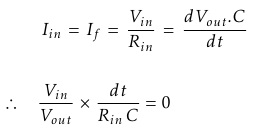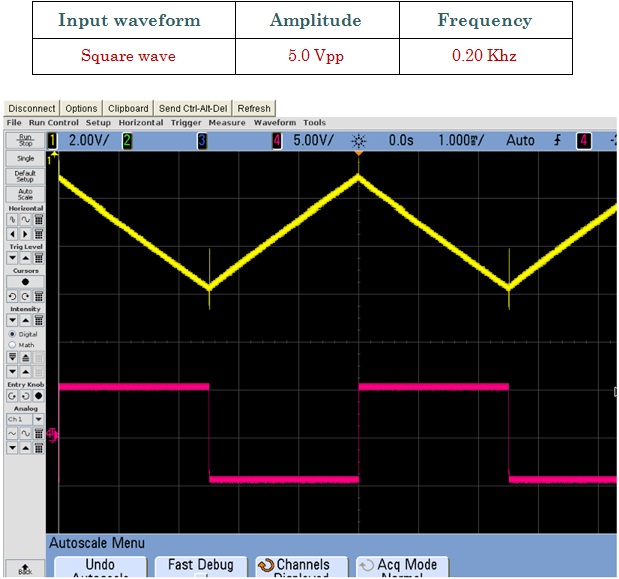We know from first principals that the voltage on the plates of a capacitor is equal to the charge on the capacitor divided by its capacitance giving Q/C. Then the voltage across the capacitor is output Vout, therefore: - Vout = Q/C. If the capacitor is charging and discharging, the rate of charge of voltage across the capacitor is given as:






Where ω = 2πƒ and the output voltage Vout is a constant 1/RC times the integral of the input voltage Vin with respect to time. The minus sign (-) indicates an 180° phase shift because the input signal is connected directly to the inverting input terminal of the Op-amp.
 |
 |







